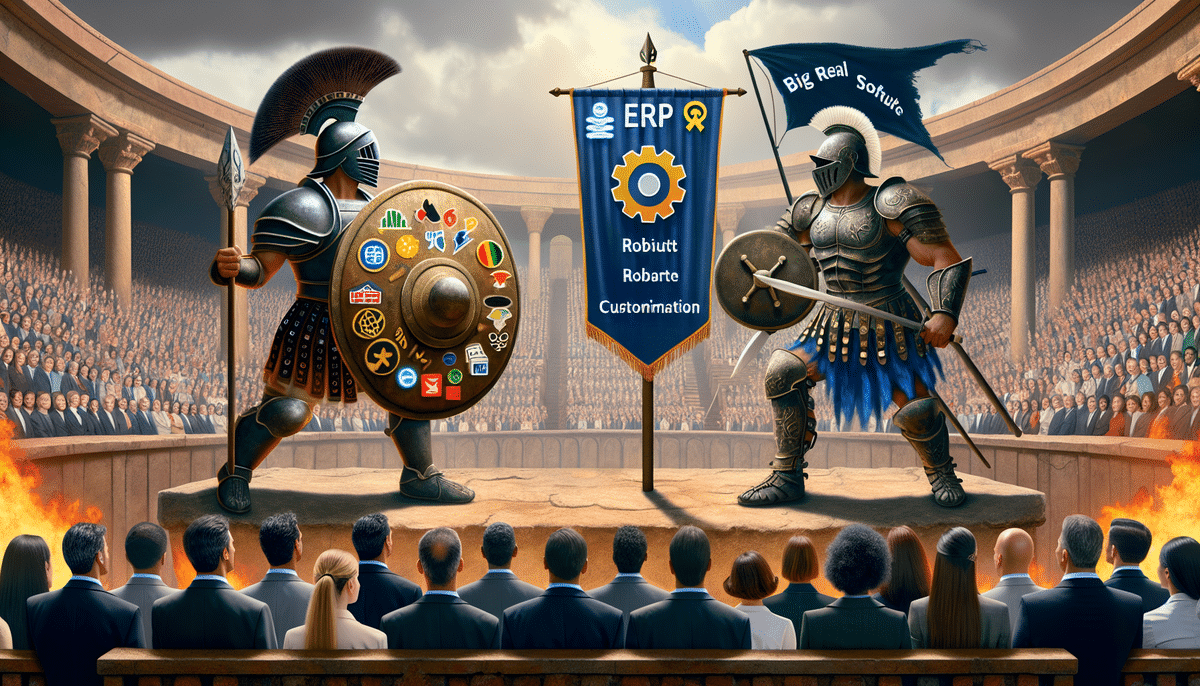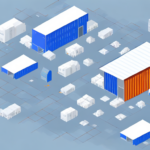Introduction to ERP Solutions: SAP Business One vs Priority ERP
Choosing the right Enterprise Resource Planning (ERP) software is pivotal for the operational success and scalability of any business. With a plethora of options available, selecting the most suitable ERP system that aligns with your company's specific needs can be daunting. This comprehensive comparison delves into two prominent ERP solutions: SAP Business One and Priority ERP. We will explore their features, pricing, user experience, and more to help you make an informed decision.
Overview of SAP Business One and Priority ERP
Understanding SAP Business One
SAP Business One is an ERP solution tailored for small to midsize businesses. Built on the robust SAP HANA platform, it offers high-speed processing and in-memory computing, ensuring rapid data retrieval and real-time decision-making capabilities. SAP Business One encompasses a wide array of modules, including accounting, purchasing, sales, customer relationship management (CRM), inventory, and operations management. Its extensive customization options allow businesses to tailor the system to their unique requirements, enhancing flexibility and scalability.
According to [Gartner's 2023 ERP Market Analysis](https://www.gartner.com/en/documents/), SAP Business One continues to be a leader in the ERP market for its comprehensive feature set and strong integration capabilities.
Understanding Priority ERP
Priority ERP is designed specifically for small to midsize manufacturing and distribution businesses. It provides a holistic suite of tools for managing financials, manufacturing processes, inventory, sales, and customer service. Priority ERP stands out with its industry-specific modules tailored to sectors such as fashion, food and beverage, and more, addressing the unique challenges faced by these industries.
As highlighted in the [Forrester ERP Report 2023](https://www.forrester.com/report), Priority ERP is recognized for its user-friendly interface and robust mobile capabilities, making it a preferred choice for businesses seeking flexibility and ease of access.
Key Features Comparison
Financial Management
SAP Business One offers comprehensive financial management tools, including accounting, budgeting, and cash flow management. Its integration with SAP HANA allows for real-time financial reporting and analytics.
Priority ERP provides robust financial modules covering accounts payable and receivable, general ledger, and financial reporting. Its financial tools are designed to streamline operations for manufacturing and distribution businesses.
Inventory Management
SAP Business One delivers real-time visibility into inventory levels, optimizing stock management and reducing the risk of stockouts. Its multi-warehouse management features enable efficient tracking and movement of inventory across various locations.
Priority ERP offers advanced inventory management capabilities, including batch tracking, inventory forecasting, and automated replenishment. These features help businesses maintain optimal inventory levels and enhance supply chain efficiency.
Production and Supply Chain Management
SAP Business One includes production planning and scheduling tools, enabling businesses to streamline manufacturing processes and enhance productivity.
Priority ERP excels in supply chain management with tools for procurement, fulfillment, and shipping processes. Its production management features are tailored to the needs of manufacturing industries, ensuring efficient production cycles.
Customer Relationship Management (CRM)
SAP Business One integrates seamlessly with CRM systems like Salesforce, providing a unified view of customer interactions and enhancing sales and support operations.
Priority ERP offers built-in CRM functionalities that allow businesses to manage the entire sales cycle, from lead tracking to post-sales support, fostering stronger customer relationships.
Pricing and Cost Analysis
Pricing structures for ERP systems can significantly impact a business's total cost of ownership (TCO). Both SAP Business One and Priority ERP offer flexible pricing models based on the number of users and required modules.
- SAP Business One: Typically incurs higher upfront costs due to its comprehensive feature set and robust platform. However, it offers scalable pricing plans that can adapt as the business grows.
- Priority ERP: Often presents a lower TCO with its subscription-based pricing model, making it an attractive option for businesses seeking cost-effective solutions without compromising on essential features.
For a detailed comparison of ERP pricing, refer to this [ERP Pricing Guide by Capterra](https://www.capterra.com/p/151853/SAP-Business-One/pricing/).
User Experience and Integration
User Interface and Accessibility
Both SAP Business One and Priority ERP prioritize a user-friendly interface. SAP Business One is praised for its intuitive design, which reduces the learning curve and facilitates quick adoption. Priority ERP, with its modern and clean interface, ensures that users can navigate the system effortlessly, enhancing overall productivity.
Integration Capabilities
SAP Business One boasts extensive integration options, allowing seamless connectivity with various third-party applications like Microsoft Office and Salesforce. This flexibility ensures that businesses can create a cohesive technology ecosystem tailored to their specific needs.
Priority ERP also supports integration with external systems, including popular CRM solutions and other business applications. Its flexible architecture allows businesses to customize integrations to align with their operational workflows.
Security Features and Support
Data Security
Data security is paramount in ERP systems. SAP Business One offers advanced security features, including two-factor authentication, role-based access control, and intrusion detection systems, ensuring that sensitive business data is well-protected.
Priority ERP similarly emphasizes data security with features such as encrypted data transmission, secure user authentication, and regular security updates to safeguard against potential threats.
Customer Support and Maintenance
Both ERP solutions provide comprehensive support and maintenance services. SAP Business One offers 24/7 support with access to a dedicated support team, ensuring that any issues are promptly addressed. Additionally, SAP provides extensive documentation and training resources to facilitate user proficiency.
Priority ERP offers various support options, including online training, a detailed knowledge base, and responsive customer service teams. Their support structure is designed to assist users in maximizing the system's potential and resolving any challenges efficiently.
Cloud-Based Capabilities
Cloud accessibility is a critical factor for modern businesses seeking flexibility and remote access. SAP Business One offers a cloud-based version, allowing users to access the ERP system from anywhere with an internet connection. This feature is particularly beneficial for businesses with remote teams or multiple locations, enhancing operational agility.
In contrast, Priority ERP primarily offers on-premises solutions, which may limit remote accessibility. However, their web-based interface does provide some level of remote access, though it may not be as comprehensive as SAP Business One's cloud offerings.
Industry Suitability
The suitability of an ERP system often depends on the specific industry requirements of a business. SAP Business One is versatile and caters to a wide range of industries, including retail, wholesale, manufacturing, and services. Its extensive customization options allow it to adapt to various business models and processes.
Priority ERP shines in industries such as manufacturing and distribution, offering specialized modules that address the unique challenges of these sectors. Its industry-specific features make it an excellent choice for businesses operating in niches like fashion, food and beverage, and more.
Customer Reviews and Ratings
User feedback provides valuable insights into the real-world performance of ERP systems. Both SAP Business One and Priority ERP receive positive reviews for their robust feature sets and reliability.
- SAP Business One: Users commend its comprehensive functionalities, scalability, and strong integration capabilities. However, some note that the initial setup and customization can be complex.
- Priority ERP: Praised for its user-friendly interface, flexibility, and excellent customer support. Some users mention that certain advanced features may require additional configuration.
For more detailed reviews, visit [G2](https://www.g2.com) and [Capterra](https://www.capterra.com) for user ratings and testimonials.
Conclusion: Choosing the Right ERP for Your Business
Deciding between SAP Business One and Priority ERP ultimately depends on your business's specific needs, industry requirements, and budget considerations. If your organization requires extensive customization, robust integration capabilities, and cloud-based access, SAP Business One may be the ideal choice. On the other hand, if you operate within the manufacturing or distribution sector and seek a user-friendly, cost-effective solution with industry-specific features, Priority ERP could be more suitable.
Carefully assessing each ERP system's strengths and how they align with your business objectives will guide you in selecting the optimal solution that fosters growth, enhances efficiency, and drives long-term success.






















